Post by Bonobo on Mar 15, 2008 22:58:32 GMT 1
Jan Matejko 1838- 1893, Kraków) was a Polish painter known for paintings of notable historical Polish political and military events. His most famous works include oil on canvas paintings like Battle of Grunwald, paintings of numerous other battles and court scenes, and a gallery of Polish kings. He is counted among the most famous Polish painters.

en.wikipedia.org/wiki/Jan_Matejko
Mieszko I (c. 935–May 25, 992) was a duke of the Polans and the first historical ruler of Poland. Member of the Piast dynasty, he was son of the legendary Siemomysł, grandchild of Lestek and father to Bolesław Chrobry, the first crowned king of Poland, and Świętosława-Sygryda, a Nordic queen.
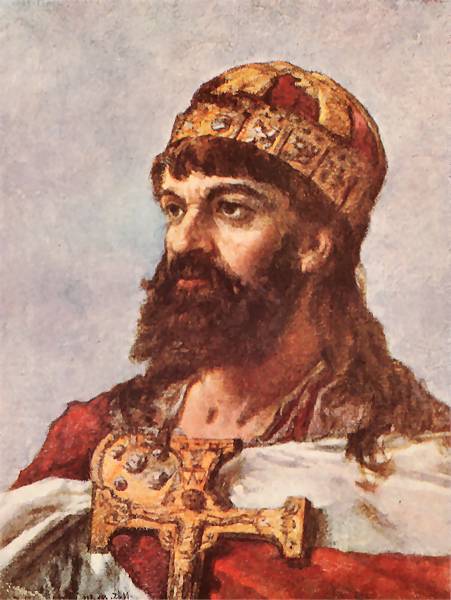
en.wikipedia.org/wiki/Mieszko_I
Bolesław I the Brave (or Valiant) (Polish: Bolesław I Chrobry 967 - June 17, 1025), of the Piast Dynasty — son of Mieszko I and of his first wife, the Bohemian princess Dobrawa — ruled as Duke of Poland, 992-1025, and as King of Poland in 1025.Bolesław was the first Polish king, since it was during his reign that Poland became a kingdom, despite the fact that some Polish rulers before 1295 would never receive a crown. Poland had thus the royal status before their ethnic relatives and neighbors, Bohemia. He was the first Polish ruler that had been baptised at birth. He founded the independent Polish province of the Church and made Poland a strong power in Europe. Bolesław for the first time unified all the provinces that subsequently came to comprise the traditional territory of Poland: Greater Poland, Lesser Poland, Masovia, Silesia and Pomerania
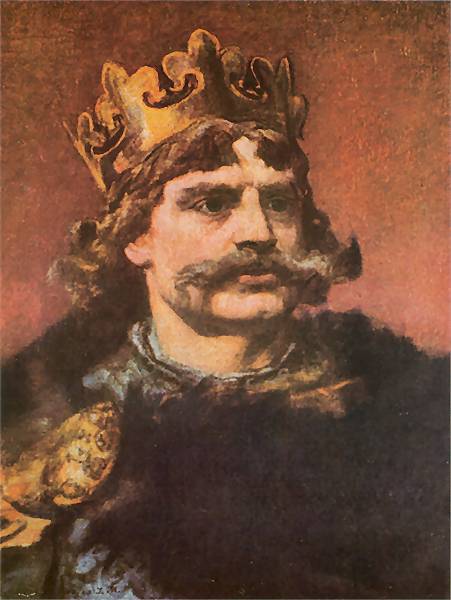
en.wikipedia.org/wiki/Boles%C5%82aw_Chrobry
Mieszko II Lambert (990-1034), was the duke and short-term king of Poland. He was the son of Bolesław I the Brave and Enmilda, daughter of Dobromir, Duke of Lusatia.
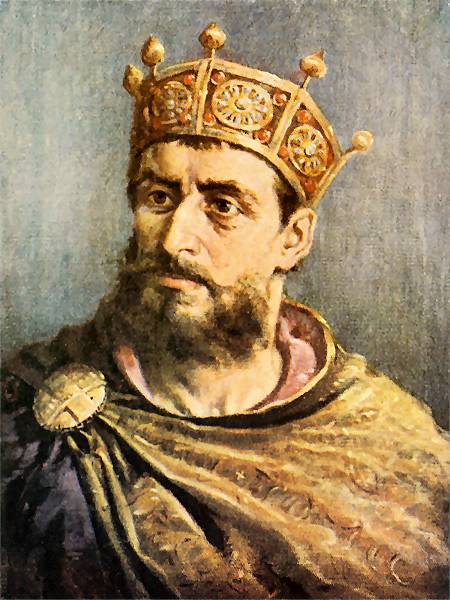
en.wikipedia.org/wiki/Mieszko_II
Casimir I the Restorer (Polish: Kazimierz I Odnowiciel; 25 July 1016 – 28 November 1058), was a Duke of Poland of the Piast dynasty and the de facto monarch of the entire country. He is known as the Restorer mostly because he managed to reunite all parts of Poland after a period of turmoil and attached Masovia, Silesia and Pomerania. Son of Mieszko II Lambert and Richensa of Lotharingia, Casimir failed to crown himself the King of Poland, mainly because of internal and external threats to his rule.
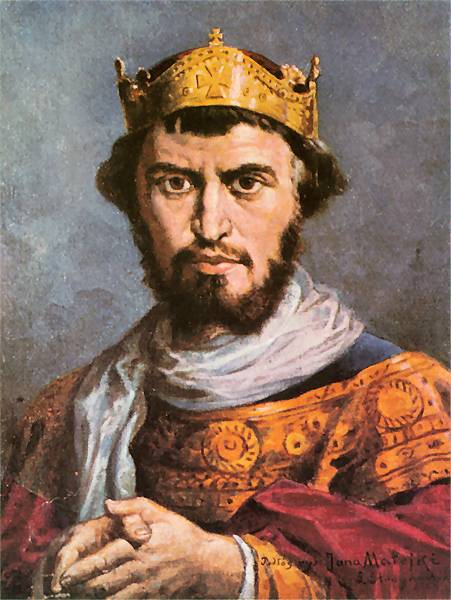
en.wikipedia.org/wiki/Kazimierz_Odnowiciel
Bolesław II the Bold (Polish: Bolesław Śmiały, also known as Szczodry, "the Generous", and Okrutny, "the Cruel"; c. 1042-1081 or 1082) was duke of Poland from 1058 to 1076, and king of Poland from 1076 to 1079. Boleslaw II is considered one of the most talented of the Piast rulers. He was a founder of numerous churches throughout the kingdom; he rebuilt the Gniezno bishopric in 1075 (consecrated in 1064) and established a bishopric in Plock (1075). He also founded Benedictine monasteries in Mogilno, Lubin and Wrocław. These had an enormous impact on the economic and cultural development of the country. Boleslaw II was also the first Polish monarch to produce his own coinage in quantity great enough to replace the foreign coin prevalent in the country during the reign of the first Piast kings.
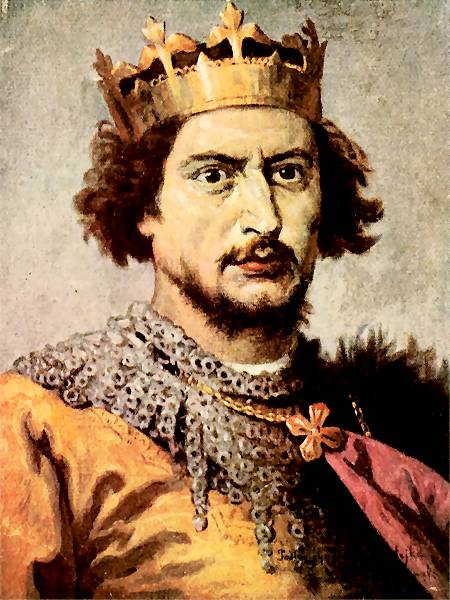
en.wikipedia.org/wiki/Boles%C5%82aw_II_the_Bold

en.wikipedia.org/wiki/Jan_Matejko
Mieszko I (c. 935–May 25, 992) was a duke of the Polans and the first historical ruler of Poland. Member of the Piast dynasty, he was son of the legendary Siemomysł, grandchild of Lestek and father to Bolesław Chrobry, the first crowned king of Poland, and Świętosława-Sygryda, a Nordic queen.

en.wikipedia.org/wiki/Mieszko_I
Bolesław I the Brave (or Valiant) (Polish: Bolesław I Chrobry 967 - June 17, 1025), of the Piast Dynasty — son of Mieszko I and of his first wife, the Bohemian princess Dobrawa — ruled as Duke of Poland, 992-1025, and as King of Poland in 1025.Bolesław was the first Polish king, since it was during his reign that Poland became a kingdom, despite the fact that some Polish rulers before 1295 would never receive a crown. Poland had thus the royal status before their ethnic relatives and neighbors, Bohemia. He was the first Polish ruler that had been baptised at birth. He founded the independent Polish province of the Church and made Poland a strong power in Europe. Bolesław for the first time unified all the provinces that subsequently came to comprise the traditional territory of Poland: Greater Poland, Lesser Poland, Masovia, Silesia and Pomerania

en.wikipedia.org/wiki/Boles%C5%82aw_Chrobry
Mieszko II Lambert (990-1034), was the duke and short-term king of Poland. He was the son of Bolesław I the Brave and Enmilda, daughter of Dobromir, Duke of Lusatia.

en.wikipedia.org/wiki/Mieszko_II
Casimir I the Restorer (Polish: Kazimierz I Odnowiciel; 25 July 1016 – 28 November 1058), was a Duke of Poland of the Piast dynasty and the de facto monarch of the entire country. He is known as the Restorer mostly because he managed to reunite all parts of Poland after a period of turmoil and attached Masovia, Silesia and Pomerania. Son of Mieszko II Lambert and Richensa of Lotharingia, Casimir failed to crown himself the King of Poland, mainly because of internal and external threats to his rule.

en.wikipedia.org/wiki/Kazimierz_Odnowiciel
Bolesław II the Bold (Polish: Bolesław Śmiały, also known as Szczodry, "the Generous", and Okrutny, "the Cruel"; c. 1042-1081 or 1082) was duke of Poland from 1058 to 1076, and king of Poland from 1076 to 1079. Boleslaw II is considered one of the most talented of the Piast rulers. He was a founder of numerous churches throughout the kingdom; he rebuilt the Gniezno bishopric in 1075 (consecrated in 1064) and established a bishopric in Plock (1075). He also founded Benedictine monasteries in Mogilno, Lubin and Wrocław. These had an enormous impact on the economic and cultural development of the country. Boleslaw II was also the first Polish monarch to produce his own coinage in quantity great enough to replace the foreign coin prevalent in the country during the reign of the first Piast kings.

en.wikipedia.org/wiki/Boles%C5%82aw_II_the_Bold









